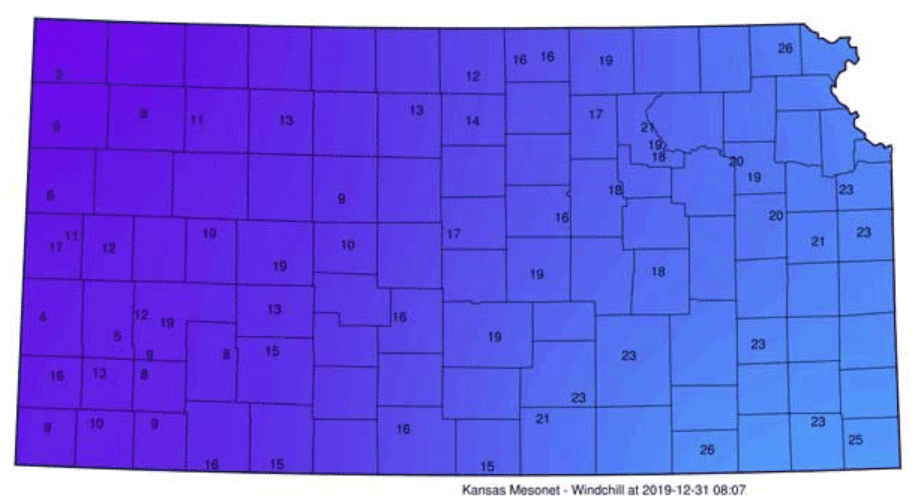By Jack Fry, Professor and Commercial Turf Extension Specialist
It’s been a wet spring through much of Kansas. In Olathe, KS there has been 11.3 inches from March 1 to June 10. Frequent rainfall reduces the necessity for grasses to produce deeper roots, and also enhances more shoot growth. As summer approaches and an extended period of time without rainfall occurs, drought stress will be occurring more rapidly that it sometimes has.
Uniform irrigation is important so that water is distributed nicely over a lawn, golf course, sports field, or other area. In addition, you can estimate the amount of water that has been lost from the turf over time, which is called evapotranspiration (ET). Evapotranspiration includes water evaporation from the soil and transpiration from the leaves. Here is a site from Kansas State University that provides weather information and allows you to determine the level of ET that has occurred:
You can click on the location near you on the KS map when this website comes up. Then, go to the upper left corner of mesonet (click on the 3 lateral bars) and select any information desired. To determine water use, go to weather – historical weather – enter the dates that are of interest for you. After doing so, click submit and you’ll see weather details returned. On the far right of the image, click on grass ET and you’ll see an estimate of ET for that area. Here’s an example of the ET that I looked at for Olathe, KS:

The ET that you see is based upon a formula called Penman-Monteith, which uses temperature, humidity, solar radiation, and wind to create the estimate. As a reminder, the ET that you view is based upon assumption that the soil moisture is high. In other words, as soil dries down in a turf area, the ET is likely going to be lower than estimated on this site. That said, this information is useful to provide guidance on the amount of irrigation that may be needed to apply to the turf area. To confirm the amount of water applied from your irrigation system, use a sprinkler gauge that indicates the amount of water applied for a given amount of time.
Deeper, less frequent irrigation will enhance rooting as time progresses. To do this, you may desire to wait until you begin to see wilt occurring on the turf. As an alternative, you can determine what the soil moisture measurement is when wilt is just beginning and irrigate just prior to that soil moisture level. As summer heats up and less rainfall begins, it is quite likely that following this strategy will still require irrigation be applied often due avoid extensive wilt. It is possible that over time, irrigation frequency can be reduced.
There are number of different research articles below that demonstrate all turf species can get enhanced rooting with a deeper, less frequent irrigation strategy.
Tall Fescue:
Huang, B. and J. Fu. 2001. Growth and physiological responses of tall fescue to soil surface drying. Intl. Turfgrass Soc. 9:291-296.
Fu, J., J. Fry, B. Huang. Tall fescue rooting as affected by deficit irrigation. HortScience 42:688–691. 2007.
Creeping Bentgrass:
Fu, J., P. Dernoeden. 2009. Creeping bentgrass turf response to two summer irrigation practices: rooting and soil temperature. Crop Sci. 49:1063-1070.
Jordan, J.E., R. H. White, D.M. Vietor, T.C. Hale, J.C. Thomas, and M.C. Engelke. 2003. Effect of irrigation frequency on turf quality, shoot density, and root length density of five bentgrass cultivars. Crop Sci. 43:282-287.
Zoysiagrass:
Qian Y. and J. Fry. 1996. Irrigation affects zoysiagrass rooting and plant water status. HortScience 31:234-237

Above is the photo from the zoysiagrass research noted above in 1996 (a number of years ago). The zoysia on the left had been irrigated daily for an extended period of time and then water was turned off. On the right, zoysia had been irrigated deeply and infrequently (based upon ET measurement) and then water was turned off. Obviously, the deeper, infrequent irrigation enhanced its tolerant to drought.



